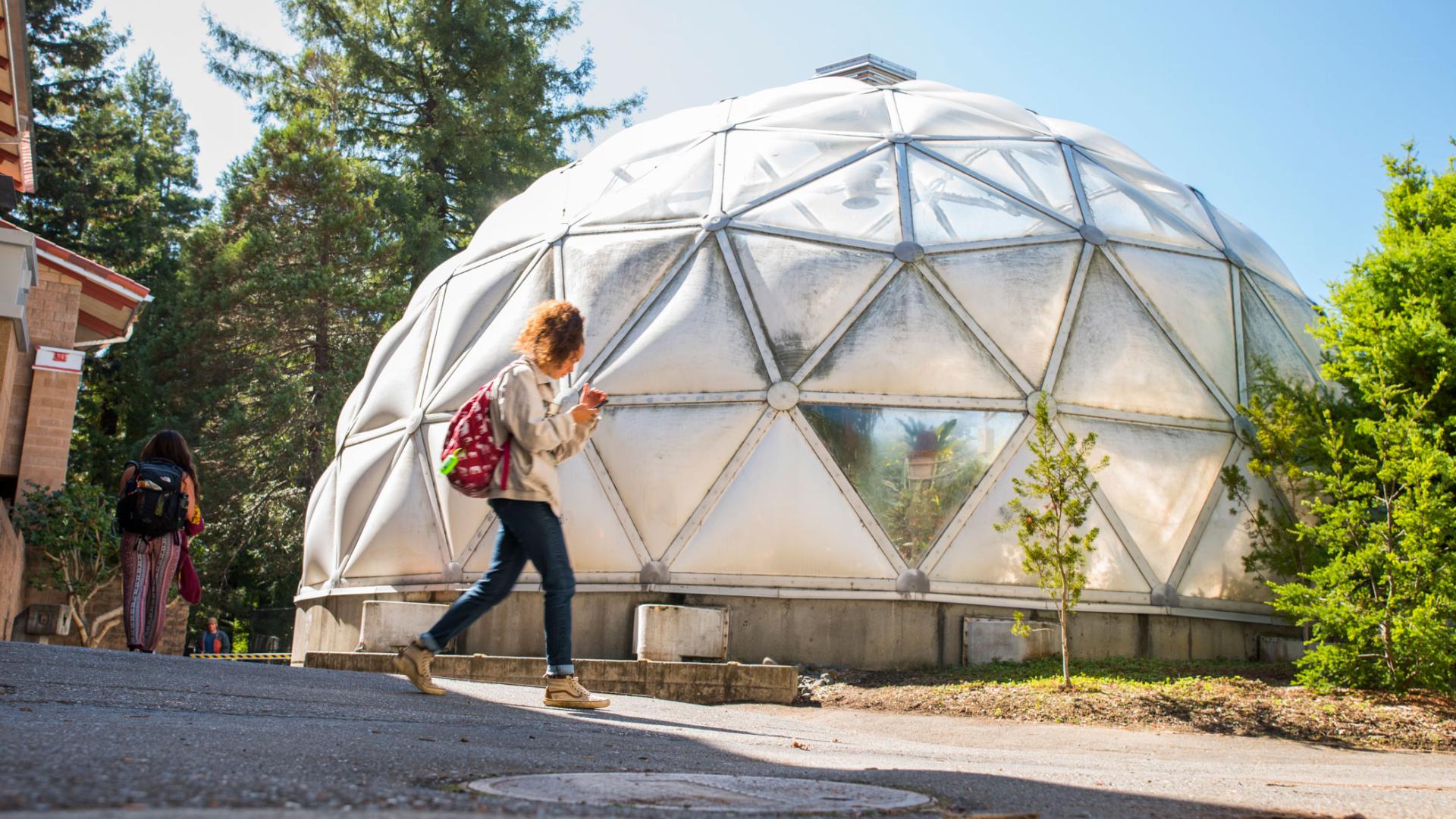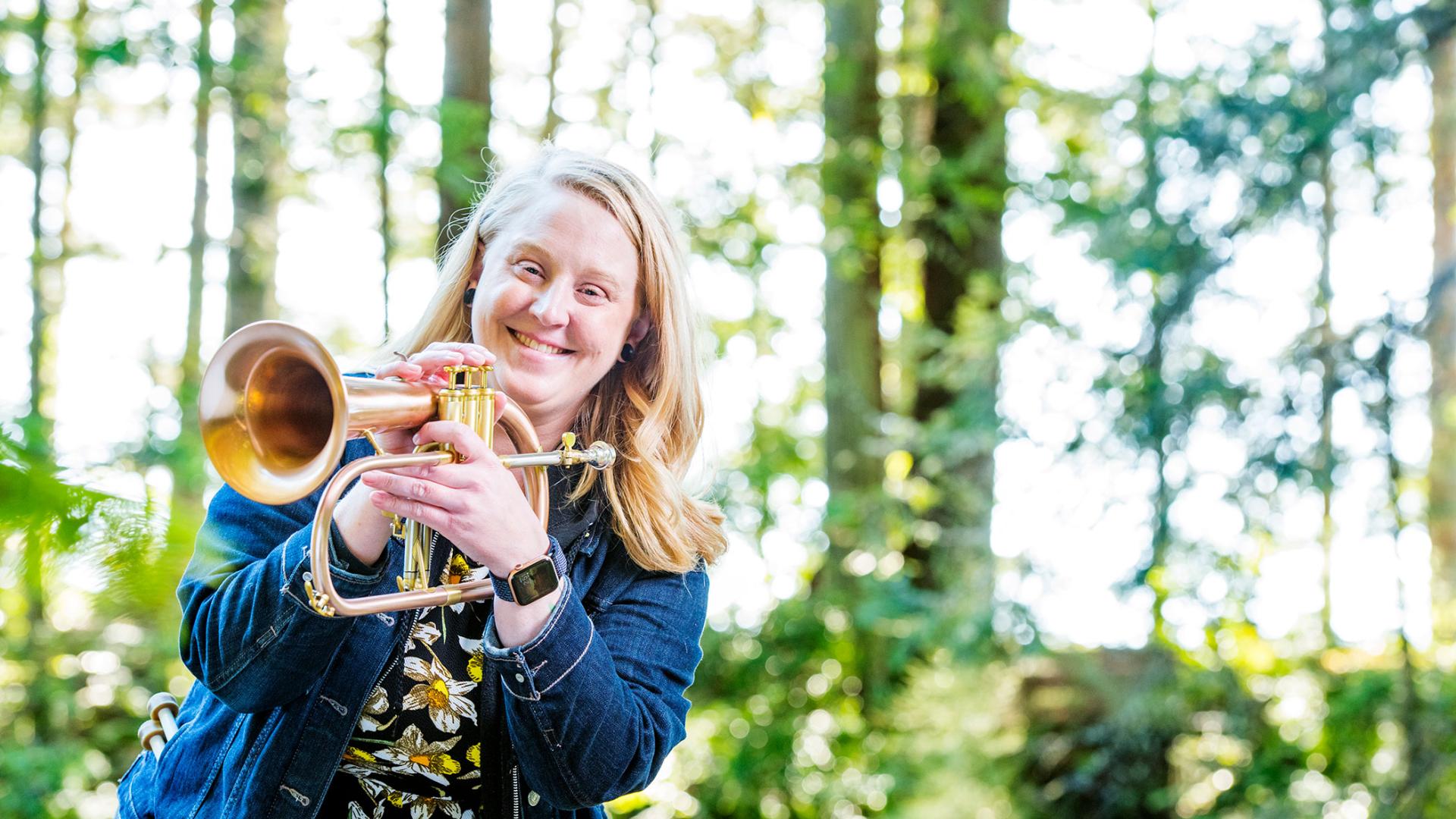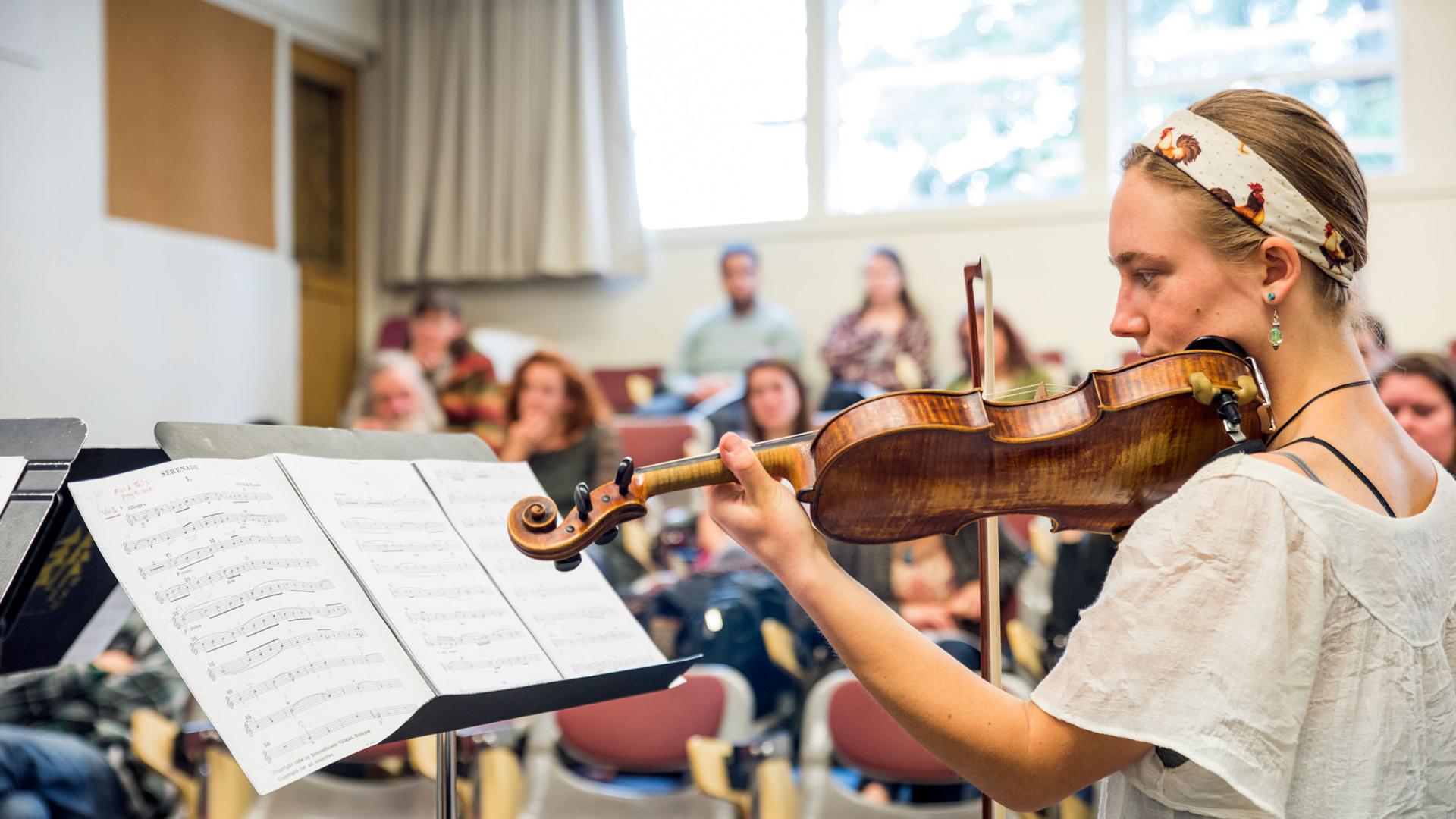May 3, 2024 | Digital Showcase | Humboldt Library
All Presenters & Abstracts
Effects of moonlight illumination on animal-vehicle collisions
Presentation Year: 2023
Sidney
Wells,
Wildlife
Effects of moonlight illumination on animal-vehicle collisions
Effects of Substrate Rugosity on Abundance and Gonad Condition of Purple Urchins (Strongylocentrotus purpuratus) in the Intertidal Zone
Presentation Year: 2023
Victoria
Johnson,
Biological Sciences
- JuliaNavaseroBiological SciencesUndergraduate Student
In northern California, purple urchin (Strongylocentrotus purpuratus) populations have exploded, leading to an invasion of the intertidal zone with potential consequences for those communities. We aimed to determine if there was a relationship between surface rugosity and urchin abundance and condition in this recently invaded habitat. We found that urchins took advantage of any intertidal habitat, as abundance was independent of surface rugosity. However, surface rugosity was related to urchin condition, with urchins on rougher surfaces in better condition than those on other surfaces. Rocky intertidal surfaces may therefore provide refugia for overabundant subtidal urchin populations.
Effects of tidal conditions on egret foraging behavior in Arcata Marsh
Presentation Year: 2023
Tania
Estrada Rodriguez,
Wildlife
This study examines how tidal levels impact egret foraging behavior in the Arcata Marsh and Wildlife Sanctuary (AMWS) in Humboldt County, California. This study aims to expand upon the limited existing research on the relationship between tidal conditions and egret foraging and to determine the effects of tide levels on egret foraging behavior. Additionally, the study assesses the influence of temperature, overcast, tide, and waterfowl presence on egret foraging behavior and measures egret strike rate and success as parameters for assessing the overall impact of high and low tides on their foraging behavior.
Engineering Endothelial Cells to Treat Pulmonary Arterial Hypertension
Presentation Year: 2023
Heather
Jackson-Pease,
Biological Sciences
Gene editing with CRISPR/Cas9 and AAVs has been a modern technology that has greatly influenced biological sciences. Coupling the editing technology of CRISPR and AAVs could lead to treating the underlying causes of pulmonary arterial hypertension(PAH). PAH is a progressive disease in your lungs that causes vasoconstriction and decreased blood flow, which can lead to heart failure. Placing a stent in the pulmonary artery, with endothelial cells engrafted on it, that overexpresses the important regulatory factors eNOS and VEGF, may lead to an increase in reendothelialization and vasodilation of the pulmonary artery.
Enhanced Learning in Biochemistry Using the Protein Data Bank and 3D Molecular Modeling in ChimeraX
Presentation Year: 2023
Frank
Cappuccio,
Chemistry
- ChristopherAriasBiological SciencesUndergraduate Student
- EzekielBuchertChemistryUndergraduate Student
- JohanaCruz LopezBiological SciencesUndergraduate Student
- CesarFernandezChemistryUndergraduate Student
- ElizabethKowalskiBiological SciencesUndergraduate Student
- ElisabetTesla NicholasTheatre, Film & DanceUndergraduate Student
- GabrielleOnnengaChemistryUndergraduate Student
- KelliePiersonBiological SciencesUndergraduate Student
The Protein Data Bank (PDB) is a repository of atomic level resolution biological structures determined by researchers around the world. Protein macromolecular structures have become an essential tool for biotechnology fields. They are used to understand the chemical and biological processes in living systems and disease, and for precise drug design. Here students utilized the molecular modeling software UCSF ChimeraX to visualize 3D PDB protein structures of their choice. Students produced Quad Chart presentations and printed 3D models to allow for deep learning in protein structure.
Environmental Monitoring for Tests of Gravity Below Fifty Microns
Presentation Year: 2023
Tanner
Hooven,
Physics & Astronomy
- ClaireRogersPhysics & AstronomyUndergraduate Student
- TaylorJuchauPhysics & AstronomyUndergraduate Student
- C.D.HoylePhysics & AstronomyFaculty
Reliable measurements of gravitational forces at scales smaller than a centimeter carry significant challenges. The non-gravitational forces that are generally negligible at the scale of everyday objects have a much more substantial effect in the sub-centimeter regime. Due to the nature of precision required in measuring micron-scale gravitational forces and the inherent weakness of gravity, it is important to record, model, and possibly suppress environmental effects in and around the experiment that may affect measurements. Recently, members of the Cal Poly Gravitational Physics Lab have focused on developing these environmental instruments and models to ensure high levels of precision.
Evaluation of a Novel Cellulase to Optimize Biofuel Production
Presentation Year: 2023
Amanda
Ratcliff,
Biological Sciences
- SaraiTapiaChemistryUndergraduate Student
- DavidLopezBiological SciencesUndergraduate Student
Cellulose waste is utilized for biofuels, however cellulase enzymes are a limiting factor. We sought to evaluate a novel cellulase identified in cow rumen metagenomic analysis provided by the Joint Genome Institute. We performed DNA analysis, SDS PAGE, and a cellulase activity assay to theoretically calculate and compare to experimental molecular weight; and determine cellulase activity. The theoretical molar mass (64.9 kD) strongly correlates to the experimental molar mass (60.7 kDa). Purified cellulase has an activity, 6.27 cm2/ug, 6x higher versus commercial cellulase enzyme. These results have positive implications for the creation of biofuels from agricultural waste products.
Examining the relationship between zooplankton abundance and piscivorous bird richness at the Arcata Mars
Presentation Year: 2023
Aminah
Aryan,
Wildlife
This study examined the relationship between zooplankton abundance and piscivorous bird richness at the Arcata Marsh
Exploratory Study for Indoor Turf Field Facilities on the North Coast
Presentation Year: 2023
Julia
Hohman,
Kinesiology & Recreation Administration
This poster describes an exploratory study that was completed this semester to explore the question of whether or not there is a need for an indoor field on the North Coast that would provide a solution that allows organized field sports to continue activities during adverse weather conditions in the low-income areas of Humboldt and Del Norte counties. Gathering data for research was carried out by talking to local individuals involved in recreational facilities development and members of sports associations. It was written to raise awareness of the need for such a space and in the hope of getting the community a step closer to figuring out how to provide such a recreation facility.
Exploring the Ultrastructure of Rust Fungus Calyptospora columnaris
Presentation Year: 2023
Michaela
Regi,
Biological Sciences
Rust fungi are obligate plant parasites that exhibit multiple life stages with drastically different physical features depending on the host it infects. While studies in the classification of rust fungi are actively debated, the ultrastructure of this particular rust fungus has been vastly understudied. Using SEM and TEM, images were taken of Calyptospora columnaris to elucidate the fine features of these different stages in an attempt to give this fungus a more comprehensive visual representation.
Expression of a diverse set of olfactory receptors in the California slender salamander
Presentation Year: 2023
Seanamae
Adams,
Biological Sciences
- KarenKiemnec-TyburczyFaculty
Vertebrates use proteins expressed in the sensory cells of the nasal cavity to detect odors and chemical signals. The study aimed to characterize the olfactory receptors (ORs) in the California Slender Salamander (Batrachoseps attenuatus). We used standard molecular genetics techniques (PCR and cloning) to isolate 15 partial sequences of ORs from salamander olfactory tissue. We used phylogenetic reconstruction to show that the salamander ORs we isolated grouped with the gamma family of ORs found in many other vertebrates. Our preliminary results suggest that this species has a large and diverse OR family, a finding consistent with their ecological reliance on chemical communication.
Fast Fashion
Presentation Year: 2023
Laquita
Agwiak,
Wildlife
- MarcoBlancasWildlifeUndergraduate Student
- JustinPackhamUndergraduate Student
Our creative project from our Wildlife 309 class: Case Studies in Environmental Ethics, focuses on the ethics of the fashion industry. With our outfits made from trash or found objects along with our posters, we are bringing waste to the forefront to expose the fashion industries façade. Even though the fashion industry is highly valuable and earns high revenues, it comes at a devastating cost to the environment as this industry is one of the top 7 polluters globally.
Flush It! Managing Antibiotic Residual Volume in Acute Care
Presentation Year: 2023
Breanna
Lien,
Nursing
This project considers the implication of administering small-volume antibiotics as an intermittent primary intravenous infusion. This method leaves significant residual volume in the IV tubing which leads to deviations from the prescribed dose and rate of administration. This is a common practice in acute care. A possible quality improvement project design using evidence-based practice is exhibited. The goal of the QI project would be to standardize policy, procedure, and administration of small-volume antibiotics to ensure consistent care and treatment for every patient.
Foraging and Vigilance in American Coot
Presentation Year: 2023
April
Barillas ,
Wildlife
I observed American Coots at the Arcata Marsh and Humboldt Bay National Wildlife Refuge for 10 minutes based on foraging and vigilance in a group or individual.
Foraging Success of American Robins (Turdus migrators) in Pasture Conditions
Presentation Year: 2023
Sara
Dabovich,
Wildlife
My research project investigated success American Robins (Turdus migratorius) as predators in livestock pastures. Using random focal sampling and critical behavior incidence recording I obtained percent of successful attempts in moderately and over grazed pastures made by male and female birds.
Freedom of Speech
Presentation Year: 2023
Barbara
Singleton,
Sociology
This case research project explains the relevance of Bond v. Floyd in relation to senators and the Freedom of speech doctrine.
Gender Equity in Wildlife Publishing: A Census of 22 Years of Authorship in the Journal of Wildlife Management
Presentation Year: 2023
Rebeca
Becdach,
Wildlife
Various studies have documented gender inequity in scientific fields, including medicine, computational biology, the physical sciences, and ecology. A clear indicator of this bias can be seen in the disparity between men and women authorship of scientific papers. This study describes gender diversity in wildlife publishing across institutions, countries, and study species taxa in recent decades. We reviewed all research articles published in the Journal of Wildlife Management from 1999 to 2020 and collected author names and affiliations. We classified the gender of each author using Genderize.io, and calculated the men:women ratio of first and co-authors over time.
Giant Serpents Of Humboldt
Presentation Year: 2023
Luis Penick
Penick,
Geography
My topic is a history of giant serpent folklore within Humboldt county and how and why it evolved. Covering how and why the folklore formed in the first place, and how and why has the folklore changed throughout time. This includes how it relates to other serpent folklore and why it is special and unique compared to different regions' folklore on serpents. To support my topic I am trying to briefly touch on why are serpents/snakes are so prevalent in folklore, what makes Humboldt a likely place for such a deep serpent mythos, what real life creatures sparked inspiration
Golf Club of Cal Poly Humboldt
Presentation Year: 2023
Alexandria
Monney,
Other
I chose to initiate this organization because I have the passion, credibility, and experience to instruct and coordinate groups of people regarding anything to do with the game of golf. I have always yearned to play the game of golf with others of my age too, which made me believe that there must be students that feel the same. There are also limited opportunities for students who play the game of golf because there is no existing club or sports team associated with the university. Lastly, nearby golf courses have great discounts for college students that could be better utilized.
Green Goal Futbol
Presentation Year: 2023
William
Krengel,
Kinesiology & Recreation Administration
- billysalazarKinesiology & Recreation AdministrationUndergraduate Student
Our Spring 2023 Senior project is an event that invited the community to a 5 vs 5 soccer tournament in Arcata. The event took place on Saturday, April 22nd on the College Creek soccer field at Cal Poly Humboldt. Using a large facility like this outdoor soccer field will gave us the opportunity to host a large number of participants, Providing a safe and equal environment to play with others. One of the objectives of Green Goal Futbol was to create an accessible all inclusive event on campus to bring people together and have fun. We are hoping that people's memories of the event will inspire others to host similar events in the future.






